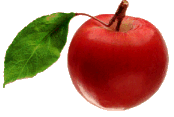Pruning
Summer Pruning (Modified Lorette System)

-
Pruning – Sunset Books Inc.1998 ISBN 0-376-03606-0 (this is out of print, but an excellent reference if you can find it)
-
Sunset Western Garden Book – Sunset Publishing Corp.2001 ISBN 0-376-03875-6 (There may be a newer edition out; any one is fine.)
-
Pruning and Training: What, When, and How to Prune by Christopher Brickell and David Joyce ISBN 978-1-4654-5760-8
-
A Practical Guide to Pruning - Peter McHoy - Select Editions ISBN 1 894722 00 0
-
Cass Turnbull’s Guide to Pruning - Sasquatch Books ISBN 1-57061-316-8 (There is a newer edition of this; either is fine.)
Revised January 20, 2020.
Recommended Websites
Mary Dunn from Surrey, B.C., has taught a workshop on Pruning Fruit Trees. She has prepared this list of links to good 'Fruit Tree' pruning sites.
-
Training and Pruning your Home Orchard. and Pruning to Restore an Old Neglected Apple Tree. Oregon State University
-
Pruning Tree Fruit - The Basics (Western Washington University).
-
PruningWeb1.pdf>
-
-
Pruning and Training Deciduous Fruit Trees (Arizona Master Gardener Manual)
-
Fruitwise Heritage Apples
-
(YouTube By Stephen Hayes)
Louis Lorette is well-known today as the founder of a system for espaliering pear trees (references). But when he introduced his system in about 1900, he was almost excommunicated for meddling with the dogma of "winter-pruning." The curator and professor of an agricultural school in Wagnonville, France, Lorette did not winter-prune. He pruned in July, August, and September (three times each summer), working mainly with pears.
Lorette published the English edition of his book on pruning in 1925. Soon after, A. H. Lees, a commercial orchardist in England, found the Lorette system too time-consuming so he modified it in 1934. Working with apple trees, Lees pruned only once, around July 20 (three weeks earlier for pears). He cut risers back to two good buds about 5 cm (2 inches) from the branch.
Why summer-prune?
There are plenty of good reasons to prune in summer rather than in winter, including the fact that the weather in July is more conducive to spending time with your fruit trees.
More to the point, though, summer-pruning increases light on the developing fruit and therefore increases fruit size, colour, and sugars. It also often, but not always, forces fruit buds to form, increasing the yield the following year.
Summer-pruning is also ideal for controlling closely planted trees (cordons) and trees that have "filled their space," as it reduces vigour. Do not summer-prune young trees that have yet to grow into their space. Instead summer-prune trees that need to be controlled within the space allowed for them.
To explain, think of two similarly sized trees of the same variety of apple. In the winter, when all the nutrients are down in the ground, you prune one-third off the top of one tree. In the spring the nutrients in the roots rise up, but find only two-thirds of the tree. What happens to the excess sap? It forces upper buds to break and the result is lots of "water shoots." The tree is invigorated and vegetative wood is produced.
The other tree is left alone during the winter. In the spring the sap rises up and fills the whole tree without producing water shoots. In July, you remove one-third of the tree. In the fall, only the remaining two-thirds of the sap moves down into the roots. The following spring, the two-thirds sap rises up and fills the two-thirds remaining of the tree, again with no water shoots.
How to summer-prune?
Make your summer-pruning cuts in the middle of the tree because the upper part gets good light.
If a riser is 30 cm (12 inches) or less, do not prune it because the bud at the tip might be a fruit bud. Prune only risers that are longer than 30 cm (12 inches), of pencil-thickness, and woody for one-third of their length. Cut back to five leaves, not counting the basal whorl (the group of leaves attached at the same point at the base of the stem), or to simplify the instructions, cut back to 5 cm (2 inches) from the branch. This is slightly longer than Lorette proposed, but the longer stub is more suited to our area (south coastal B.C.), where we can get late season growth.
Summer-pruning should always be used on plum trees as winter pruning can encourage the development of "silver-leaf," a fungal disease. Winter-pruning of apple and pear trees should be reserved for weak trees and for removing diseased wood.
So, in the beginning of July, get out your pruners and prune your pear trees and, in the third week of July, prune your apple and plum trees. It's a nice time to be working in the garden.
